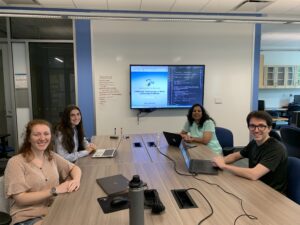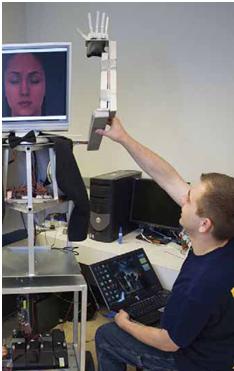The Department of Computer Science is excited to feature our summer research groups and take a look at what they are working on!
Dr. Monisha Pulimood’s research group includes Kiera Gill (’23), Matthew Hannum (’23), and Jenna Stiesi (’22). The students are supported through Dr. Pulimood’s Barbara Meyers Pelson Chair in Faculty-Student engagement (AY 2018-2021) award. This summer, the students are working together to conduct research and continue development of CABPortal, a web-based application designed to make researches associated with the Collaborating Across Boundaries (CAB) pedagogical model publicly available.
The application leverages concepts from human computation, collective intelligence, and open collaboration to enable current and potential adopters to find interdisciplinary courses and project ideas of interest, and to become motivated to participate in the dissemination and sustainability of hosted projects. They are also continuing development on some of the applications developed by students in Dr. Pulimood’s Software Engineering classes in previous semesters.
The CAB Project was supported by two grants:
- The Barbara Meyers Pelson Chair in Faculty-Student Engagement Endowment Fund in academic years 2018 – 2021, during which time Dr. Pulimood was the endowed chair.
- NSF Award #1914869, Collaborating Across Boundaries (CAB) to Engage Undergraduates in STEM Learning, for which Dr. Pulimood is the principal investigator (PI), along with Professor Kim Pearson (Journalism & Professional Writing) and Professor Diane Bates (Sociology & Anthropology) who are the co-PIs.



 Andrea Salgian, assistant professor of computer science; Teresa Nakra, assistant professor of music; Christopher Ault, assistant professor of interactive multimedia; and Jennifer Wang, associate professor of mechanical engineering, collaborated on the proposal, called “RUI: Giving the Maestro a Human Heart—Fostering Creativity in a Multi-Disciplinary Undergraduate Environment.”
Andrea Salgian, assistant professor of computer science; Teresa Nakra, assistant professor of music; Christopher Ault, assistant professor of interactive multimedia; and Jennifer Wang, associate professor of mechanical engineering, collaborated on the proposal, called “RUI: Giving the Maestro a Human Heart—Fostering Creativity in a Multi-Disciplinary Undergraduate Environment.”